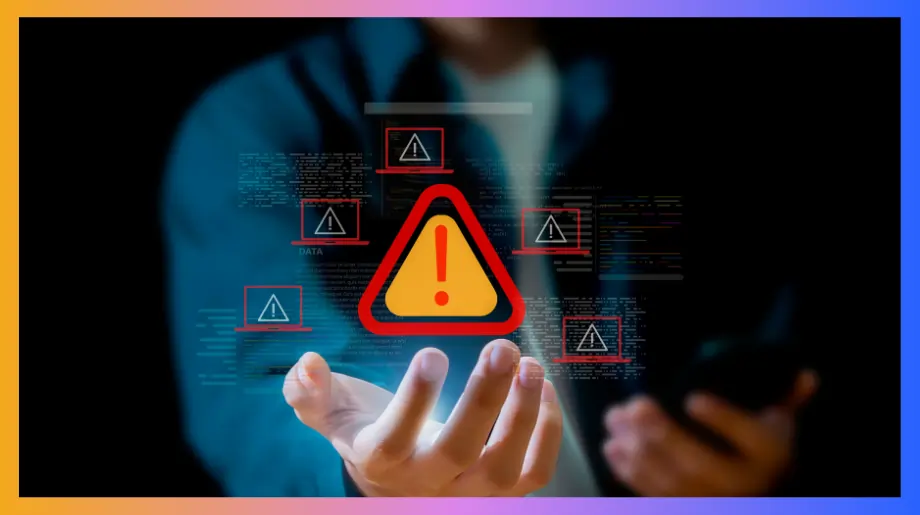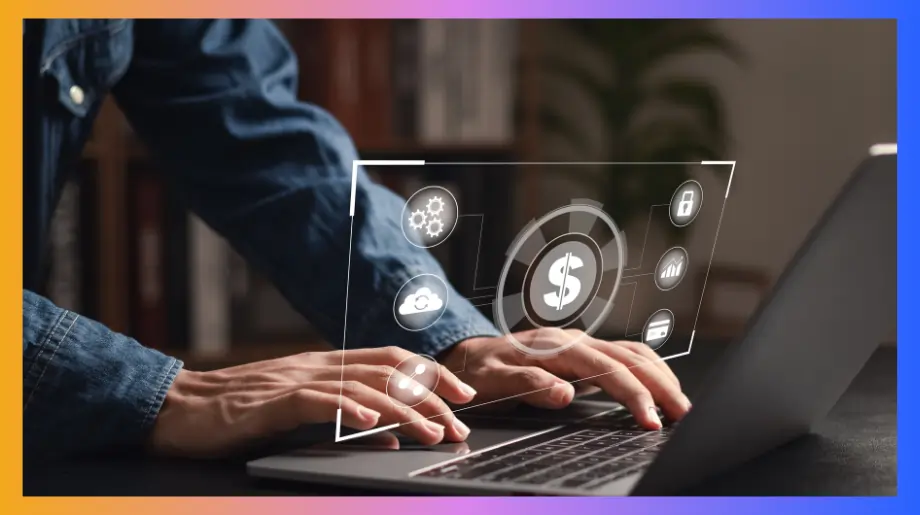Businesses to authenticate and authorize users across various platforms, ensuring a secure environment for both customers and enterprises. As such, this guide is helpful to organizations that want to improve its CIAM strategy or an individual who wants to know more about customer identity solutions.
What is Customer Identity and Access Management (CIAM)?
CIAM is an application that deals with the proper handling of customer details and the control of their access to applications and services. It has simple registration, two-factor or multi-factor authentication, account self-sufficiency, consent and preference management. SSO provides better user experience while identity proofing and encryption ensure security and CIAM complies with data protection laws. It assists big audiences and provides information on consumer habits, which is useful for customizing the customer experience and organization management. CIAM in the long run proves helpful in gaining the trust of the customers and, in turn, helps the organizations to grow their business.
Why is Customer Identity and Access Management Important?
Customer Identity and Access Management (CIAM) is more than just a digital necessity – it's a gateway to building trust and loyalty with your customers, thus providing tangible CIAM business benefits as well as increasing satisfaction by guaranteeing the security of users’ data, individualization of experiences, and continuity of interactions. CIAM is not necessarily about compliance or security, but in fact it is about establishing trust which can lead to long term relationships with one’s precious clients.
User Experience Enhancement
CIAM allows organizations to offer the best client experience. Also, for instance, by offering SSO and social login, individuals can use several related services without much effort, which positively influences their satisfaction. Its benefits for businesses by enabling them to collect and process data on the customers, which means that the business can then be in a position to deliver customized services and products that are mostly preferred by the target consumers.
Scalability and Flexibility
Organizational development is a reality that implies change as their needs grow, businesses also change. CIAM systems are built to grow as the volume of users, they do not reduce on the level of security or performance of the system. CIAM solutions can be interfaced with various platforms and services, thus they are universal solutions that can be easily adapted to the changing needs of the business and technological advancements.
Customer Engagement and Retention
Using effective CIAM practices, companies can enhance customers' trust, which results in higher levels of retention. Consumers become more comfortable and they gain confidence when they are assured that their information is being properly managed. CIAM makes it possible for organizations to interact with the customers in a smart way through the appropriate marketing and communication techniques. The gathered identity data enables companies to get a better picture of the customer and his/her actions.
Operational Efficiency
By implementing a centralized identity management system, organizations will be able to minimize on the time that is taken to manage the user identities. This is advantageous for staff to work on other more important issues other than dealing with identity management issues. New users can easily be registered into a CIAM system and they can immediately start using the services without much hindrance or a long delay is expected.
Cross-Channel Consistency
CIAM helps the businesses to build the single identity for the customer for the web, mobile, and in-store. CIAM is useful in deployment of omni-Channel marketing strategies. This will allow businesses to monitor all the interactions that a customer has been through and even send messages based on the journey the customer is on.
Analytics and Insights
CIAM solutions gather useful insights of the users behavior to help business entities make the right decisions in their operations to enhance services. Understanding identity data means being able to determine trends within the consumers market behavior, and thus adapt to these trends.
What are the key Differences of CIAM vs IAM ?
When comparing CIAM and IAM, it is crucial to outline that the first one focuses on customers, while the second one is centered around users. Although IAM is mostly focused on the identity of the internal users of an organization and their access to available resources, CIAM is specifically designed to address the needs of a company’s external clientele or consumers. The former leads to different goals, attributes, and factors for each kind of identity management.
Customer Identity and Access Management:
- Authentication Methods: CIAM uses Multi-Factor Authentication(MFA) , social login possibilities, and biometric identification. These methods improve on security as they afford the user flexibility as well as convenience.
- Integration: CIAM works in conjunction with customer facing applications such as e-commerce, portals, and mobile applications. It is a way of making sure that the users have a familiar and safe touch point with the organization all throughout.
- Lifecycle Management: CIAM is responsible for the creation of the customer journey from acquisition through activation and loyalty. This makes the user get a good and secured experience all through his or her dealings with the company.
- Personalization: CIAM has a vast degree of customization, which adapts the solution to the user’s habits or choices. This aids in providing content and recommendation that is relevant to the customer thus increasing the customers’ experience.
Identity and Access Management:
IAM is an essential component of contemporary cybersecurity that encompasses policies, technologies, and processes for the definition and administration of digital identities and access rights in organizations, protection of sensitive data and application of regulatory requirements, as well as optimization of users’ access.
- Authentication Methods: IAM uses strong robust authentication methods like Multi-Factor Authentication (MFA), smart cards, biometric and tokens. These methods make sure that the internal access is secured to the highest level.
- Integration: IAM interacts with other systems in the company including the Human Resource systems, internal applications and other organizational resources. This integration also helps in centralizing the access control.
- Lifecycle Management: Employee management starts and ends with IAM, from the time an employee is hired up to the time he/she is terminated from the company.
- Personalization: IAM provides modest levels of personalization because it is more concerned with the standard access and policies. The aim is to achieve uniformity and security of access throughout the organization according to the organizational positions and duties.
Core Capabilities of Customer Identity and Access Management (CIAM)
CIAM is indeed similar in many aspects; however, it mainly stands out in terms of what is different and distinctive, which includes customer interaction, confidentiality, and relations. Here’s an exploration of some core capabilities of CIAM way:
- Customer Registration and Onboarding:
CIAM solutions offer smooth and easily adaptable registration methods such as email, social media account, or SSO. This cuts the costs and increases the chances of consumers adopting the systems.
- Self-Service Account Management:
Self-service portals allow to control a personal account, changing personal data, and setting up preferences by the users. This is useful for the users, and it relieves many organizations from dealing with many complex procedures.
- Multi-Factor Authentication (MFA):
MFA makes accounts more secure because people are asked to enter two or more factors before being granted access to an account. This could be something the person knows such as a password, something the person has such as a mobile device or even something the person is biometric.
- Single Sign-On (SSO):
SSO means single sign on; here, a user is only required to log in once and he/she is in a position to receive access to different applications and services. This makes it easier for the user and minimizes the instances of having to remember many different passwords.
- Access Management and Authorization:
CIAM solutions manage how and what resources the users are allowed to use based on the role and permissions granted. This also helps to limit the rights of the users to only what they need for their working functions hence increasing security.
- Directory Services:
Centralized directory services are responsible for the storage and administration of the user’s identity information. This makes certain that the same information stored in all the applications and services is consistent and correct.
- Threat Detection and Fraud Mitigation:
Machine learning and big data analysis identify threats and take corresponding actions. This assists in combating activities like account merging and identity theft.
- Decentralized Identity and Identity Orchestration:
New CIAM solutions include DI features, enabling users to manage their own identity data using blockchain. This minimizes the probability of occasioning huge centralized data losses. Controls the transfer of identity data between different applications and systems to maintain the coherence of the security policies implemented at each stage of the customer’s interactions with the company.
- Adaptive Authentication:
Leverages context and risk to make authentication parameters change based on the environment or perceived risk. For instance, it can enforce MFA for critical tasks but let the users login with passwords alone for less critical tasks.
How CIAM can Secures Customer Data:
CIAM serves as a protected customer, a comprehensive approach to safeguarding customer data, ensuring that organizations can deliver seamless and secure experiences while maintaining the highest levels of user trust.
1. Enhanced Authentication Techniques:
CIAM solutions pay a lot of attention to the methods of the authentication process and the use of MFA. This further enhances security since users will be forced to provide other forms of identification other than their passwords, and this makes it incredibly hard for an unauthorized person to access the application.
2. Streamlined Single Sign-On (SSO):
CIAM manages SSO login, meaning the user only logins once to gain access to other applications. It also serves to enhance the user experience while at the same time lowering the likelihood of password incidents that could compromise security.
3. Transparent User Consent:
These systems equip the users with a clear modus operandi on how consent relating to the use of their personal data will be handled. Users are also able to protect what information they disclose and how it will be used hence creating a great deal of trust.
4. Robust Access Control Mechanisms:
CIAM solutions use very specific access control policies that dictate who has access to data and based on a user’s role and privileges. This means that only the right people have access to the information ensuring that even in the event of a breach, the information is not released to the public or the wrong parties.
5. Data Protection via Encryption:
Encryption of customer data is one of the core processes of CIAM. Data at rest as well as data in motion are encrypted and hence even if intercepted, the data is still secure.
6. Behavioral Analytics and Threat Detection:
The CIAM platforms may have enhanced monitoring features that look for irregularities in the users’ activities. The real-time alert can be generated if any such activities deviate from the normal pattern so that action can be immediately taken against the threats.
Challenges in Implementing Customer Identity and Access Management (CIAM)
1. Integration with Existing Systems:
Most organizations remain in the older systems that may not integrate well with the CIAM solutions currently in the market. CIAM integration with such systems can take a lot of time, money, and resources to make the integration perfect. This is due to the fact that CIAM solutions deployed by organizations that have a complex and diverse technology infrastructure are challenging to integrate, test and operate with a high degree of interconnectivity across the various platforms, applications, and environments that constitute the enterprise technology ecosystem.
2. Data Security and Privacy:
CIAM solutions deal with personal customers data, which makes the solutions potentially vulnerable to cyber threats. One of the major issues is the assurance of effective measures to protect data, as well as the response preparations for data breaches. It can be challenging to handle and safeguard the customer’s data in a manner that fully respects privacy and complies with the consent regulation in a constantly evolving environment.
3. User Identity Verification:
Verifying the authenticity of user identities accurately and efficiently is challenging, particularly in environments with high volumes of new user registrations. Implementing effective fraud detection and mitigation strategies is crucial to protect against identity theft and other malicious activities.
4. Cost and Resource Management:
CIAM solutions can be costly to implement, mainly because the solution entails a considerable investment in technology, integration, and maintenance. Another ongoing issue is the lack of adequate human and financial capital to support CIAM systems’ implementation and sustenance.
5. Managing Multiple Identities:
There are cases where an organization has to deal with the same user across many systems and applications with different roles and permissions. It is, therefore, not easy to attain a consistent and consolidated strategy in identity management. It is difficult and crucial to develop a 360-degree perspective of each customer by consolidating information from numerous sources for the purpose of delivering individualized encounters and satisfactory service.
6. Technological Complexity:
Due to the fast and unrelenting advancement of technology, CIAM solutions need to be slowly updated to fit new security threats, users demands, and regulation. CIAM implementation and maintenance entail the use of technical personnel, which may prove to be scarce and expensive.
CIAM Use Cases in Different Industry
Retail and E-commerce:
CIAM provides targeted promotions and product recommendations due to customer preference and buyer persona collection and analysis. It protects any check out solutions with Multi-Factor Authentication (MFA) and tracks memberships and offers rewards for loyalty programs. CIAM also helps in the creation and easy management of accounts that made it rather easier for customers to interface with e-business. CIAM provides secure cash transactions and ensures the safety of the client’s information; thus, contributing to the clients’ trust and, consequently, increasing sales in the retail and e-commerce sectors.
Financial Services:
For the financial institutions online banking CIAM is used for the secure authentication and access control. It also pays attention to KYC and AML regulations that deal with the identity of the customer and the transactions taking place. Thus, CIAM protects businesses from account abuse with real-time detection and prevention of fraud with the help of state-of-the-art threat detection and fraud prevention mechanisms. Moreover, CIAM optimizes the financial services and pushes more financial products that are suitable for a customer. CIAM fortifies a client through data security and compliance to the pertinent regulations that are crucial in the financial services market segment.
Healthcare:
CIAM offers safe patient portal access so that patients can review their medical data, arrange appointments, and interface with their care suppliers. It protects data and addresses legal rules such as HIPAA in the health sector while handling patients data and consent on the use of the data. CIAM also assists in safer ways of authenticating and authorizing patients and doctors for accessing telemedicine services. Through a stronger focus on data protection, CIAM helps patients be more trusting of their providers, thus increasing the effectiveness of healthcare and making processes within this sphere more efficient.
Media and Entertainment:
CIAM helps media and entertainment businesses to personalize the content recommendation on the basis of user interest and show history which improves engagement. It also deals with the user ID’s and subscription information to allow easy access to the paid contents as well as proper charging. The consequences of safe authentication and access involve safeguarding users information and defending personal contents and ideas on digital environments. CIAM makes media and entertainment organizations more appealing to consumers due to the security of data and better targeting, allows them to get more representatives from the second week of shows, monetize different content types, and adapt to the new media landscape.
Government and Public Sector:
CIAM enables people to obtain permits, pay their taxes, check records and employ numerous other facilities over the internet through safe means. Thus, it guarantees the compliance with data protection regulations and standards through appropriate management and protection of the citizen data. CIAM systems also confirm the identity of the voters that are accessing government services thereby minimizing cases of identity fraud. The methodology of CIAM not only improves the security and efficiency of the public services, but also contributes to the increased citizens’ confidence in the government, as well as aids the agencies in delivering efficacious services by meeting regulatory compliance.
B2B Enterprises:
CIAM allows employees of partners and suppliers to access their respective portals for collaboration and exchange of information within a secure environment to keep the organization’s critical business information safe from intruders. This is because the two controls include; role based access control and attribute based access control; they will only allow access to specific data relevant to the business partner or supplier. Successfully controlling user identification from the time a user joins an enterprise to the time they leave, is an essential security practice that B2B organizations use to enhance the functioning of their companies. CIAM locks down relationships with partners and suppliers making customers’ business trustworthy, efficient, and sustainable in the ambiguous B2B environment.
Conclusion:
Customer Identity and Access Management (CIAM) is indeed a fundamental tool for all companies, irrespective of their industry. By efficiently handling customer identification and authorization processes, CIAM ensures robust security measures, seamless user experiences, and enhanced personalization. Adopting CIAM is not just a wise decision but a necessity for businesses that want to grow and continuously innovate in the current fast-paced environment.In this way,Infisign Unifed helps to generate customer loyalty and satisfaction by improving the user's experience and easy integration into the system.





















